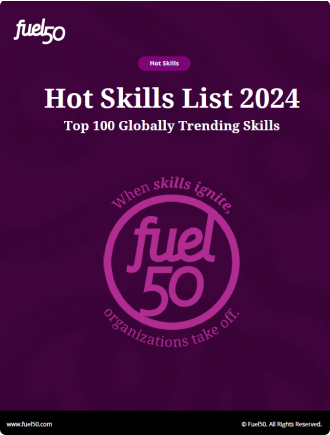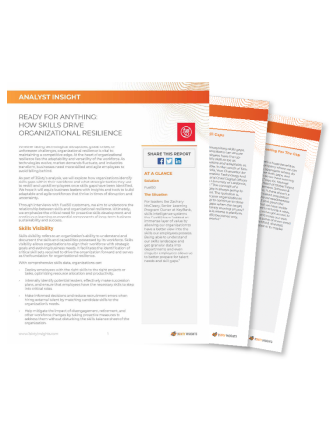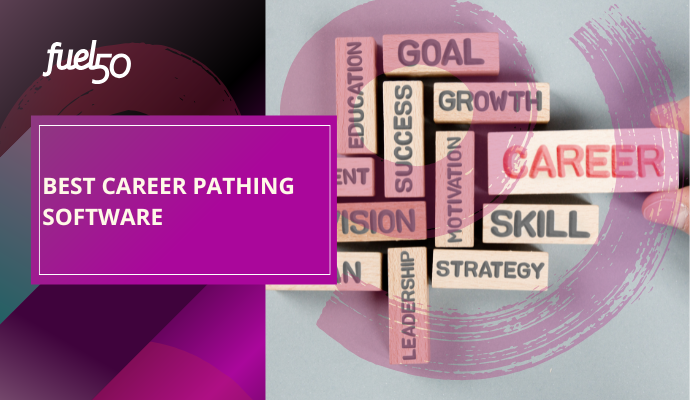Years ago, HR tech was seen as a fancy luxury that only enterprise organizations could afford; something nice to have but not essential for business operations. The focus was on basic automation like payroll, benefits administration, and applicant tracking.
Now, things have changed. HR technology is no longer just “nice to have”—it’s mandatory.
Our annual Skills Tech Survey, which gathers insights from HR leaders across the U.S. and UK, reveals that in 2025, 55% of organizations are increasing their HR technology budgets, while only 14% plan reductions.

This is a response to fundamental shifts in how organizations are dealing with their talent. Recent findings have emphasized the need for visibility and insights into their workforce capabilities: Seventy four percent of organizations report a lack of skills visibility actively impedes their business objectives, while 90% say they urgently need automated skills mapping tools.
In this article, we’ll examine:
- What pressing challenges are driving this widespread budgetary increase
- Why traditional approaches are no longer sufficient
- How organizations plan to deploy these investments
- Where this trajectory leads us in the evolving talent landscape
Why companies are investing more
For decades, HR technology was seen as a cost center, that is, a necessary expense for managing payroll, benefits, and basic employee data.
Organizations invested in foundational systems like HRIS and basic learning management tools, thinking them sufficient for their needs.
This mindset persisted because traditional HR metrics focused on operational efficiency (time to hire, cost per hire, training completion rates, etc.). The connection between HR technology and business outcomes remained nebulous at best.
Today’s reality exposes the limitations of that approach. HR activities have become a huge driver of organizational growth, so the traditional tech stack, built for administrative efficiency, can no longer address modern workforce challenges.
Our data reveals three critical gaps in current HR technology:
- Organizations lack visibility of their talent capabilities. While 92% of HR leaders believe they have sufficient knowledge of their workforce skills, 74% simultaneously admit a lack of visibility is hurting their business objectives. This contradiction suggests a misunderstanding of what true skills visibility means and how to track organizational talent.

- Existing systems can’t handle the complexity of modern skills management. An overwhelming 78% of organizations report their skills-to-role mapping is either outdated, messy, or nonexistent, proving traditional HR systems are ill equipped to handle the dynamic nature of today’s skills landscape.

- Most critically, current technology can’t support the shift from job-based to skills-based organizations. Despite 95% of companies prioritizing internal mobility, their systems can’t connect current capabilities to future needs, which leaves them blind to developmental opportunities and emerging skills gaps.
This perfect storm explains why organizations are finally ready to invest in advanced HR solutions.
Where are companies planning to invest?
According to our survey data, 55% of companies are increasing their HR tech budget in 2025.
At the core of this monetary surge is the recognition that skills visibility produces a competitive advantage. Organizations are investing heavily in skills infrastructure, with 90% prioritizing automated skills mapping tools and validated skills libraries.
These aren’t just HR tools; they’re business intelligence platforms that enable businesses to deploy talent more effectively, spot emerging capabilities, and adapt faster to market changes.
Talent retention and development are also driving technological adoption. Almost half (48%) of organizations are prioritizing retention in 2025, so their focus is on technologies that create clear growth pathways.
This explains why 34% are simultaneously investing in career development and performance management tools. 
Most significantly, organizations are building predictive talent capabilities. The investment in reskilling and upskilling technologies (33% of organizations) signals a move from reactive hiring to proactive capability development. These tools not only identify current gaps but also help organizations anticipate future needs and cultivate talent ahead of demand.

As a result, companies can build rather than buy critical capabilities, thus reducing costs while increasing organizational resilience.
The common thread in these findings is that each investment area addresses a specific business need while supporting a more adaptable, future-ready organization.
What this means for your company
Organizations that want to capitalize on this shift in HR technology need to move beyond traditional thinking about talent systems.
Start by assessing your skills visibility gap. Before you evaluate specific technologies, you need to pinpoint your blind spots.
Can you answer fundamental questions about your workforce capabilities? Do you know what skills drive performance in critical roles? Can you identify emerging capabilities that could create new business opportunities? This baseline assessment will guide your technological investments.
Next, evaluate your tech stack against future requirements, rather than current limitations. The data shows that 90% of organizations need automated skills mapping and validated skills libraries.
 But the real question is what capabilities your organization needs to secure a competitive advantage. Map your technical requirements to specific business outcomes, like improved talent retention, faster capability building, and more effective resource deployment.
But the real question is what capabilities your organization needs to secure a competitive advantage. Map your technical requirements to specific business outcomes, like improved talent retention, faster capability building, and more effective resource deployment.
Most importantly, recognize that this is imperative for the company. Build your investment case around measurable business impacts, such as reduced hiring costs, faster time to skill mastery, or improved project delivery thanks to better talent deployment.
The winners of this transition won’t be the biggest spenders but the organizations that align their technological investments with clear business outcomes. Start small, if necessary, but start now. The gap between organizations with modern talent capabilities and those without is widening rapidly, so you need to take action to avoid falling behind.











